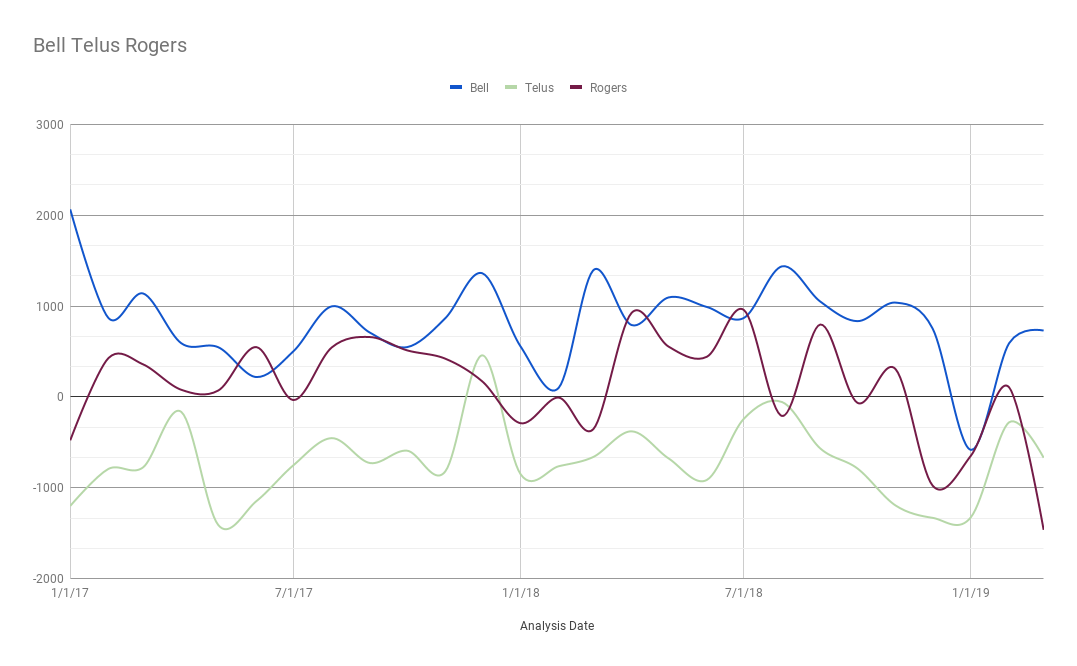Here are my unfiltered answers to questions surrounding AI.
Beyond the Jargon – what problems can AI solve for me?
AI can solve problems where a judgement call is needed. In essence it is suited to contexts where there is an opinion or an attribute need be determined based on patterns. A prime example is sentiment analysis. If an airport wants to learn what people think of its services, they can train an AI engine to detect sentiment. Using AI, here is an example of how sentiment can be compared between two airports Vancouver International Airport @yvrairport and Toronto Pearson International Airport @TorontoPearson .

Are there any successful AI implementation Models?
In terms of models, AI solutions are not cookie-cutter. A model has to be built based on a particular project premises. There may be some lessons learned, but the models are generally not recyclable.
What are a few steps that can ensure success implementing AI?
Its always important to think of the need or the opportunity that we need to solve.
Its important to think of AI as a means to an end, not the other way round
What is an Applicable AI Scenario?
Scenario: People needing to commute before flying are generally unhappy. How can we make their journey or experience better.
- Step 1: Identify a problem or an opportunity. In this case our goal is to improve user experience by identifying their pain points. e.g. customer who commute to fly have a negative sentiment towards the airport.
- Step 2: Interview Stakeholders ask them about their possible solutions. Its extremely important to ask the stakeholders involved for their assumptions. Suggestions from stakeholders could be: Provide parking assist solution, better signage and public transit information, a mobile application that provides a holistic experience.
- Step 3: Use Big Data (Social/Sales/Flight/Traffic/Weather) to understand sentiment. The public is generally vocal about their experiences in the public services domain. Your lead scientist can design an approach to assess sentiment and to extrapolate reasons for negative sentiment. This step ought to include quantitative and a qualitative data analysis.
A) Quantitative data analysis will identify top 10 challenges statistically. for example, unavailability of parking spaces could attribute to negative sentiment.
Using quantitative analysis a scientist can extract the top 10 reasons for negative sentiment.
B) Qualitative analysis is also needed. In this step, a human can train the AI engine to categorize challenges met by travelers. The AI can then sift through data at mass and provide more refined stats.
Using qualitative analysis a team of analysis can understand and break down user stories into patterns. Once the patterns are defined, the AI can quickly categories all data into patterns .
- Step 4: Compare assumptions with data. Comparing assumptions to data findings is key. Assumptions made by stakeholders may remain valid despite the lack of data support. The gap could be due to access or data quality.
- Step 5 – Implement solution and remeasure in 6 months or when appropriate: Sentiment may change in the order of days or weeks. Once a solution is chosen and implemented. Sentiment results will start to change.
Can AI be applied to all industries?
Indeed, here is another example how AI has been used to detect cell phone user sentiment in Canada. among @bell, @rogers, & @telus
Why is there a lot of confusion of what AI is?
Most people explaining AI, may lack the technical and scientific rigor. I am told multi-billion budget companies are failing at the basics.

